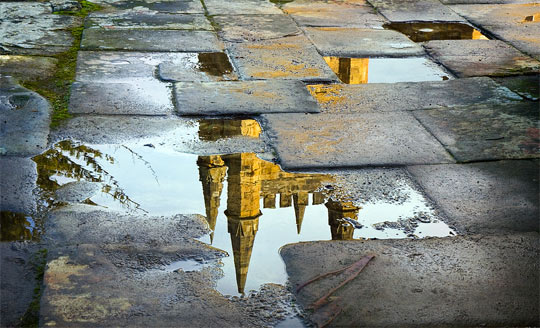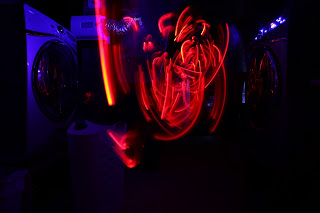Friday 14 December 2012
Tuesday 27 November 2012
Thursday 22 November 2012
Tuesday 20 November 2012
Monday 19 November 2012
Friday 9 November 2012
Born Into Brothels Questions
Part A - Answer the following questions:
1.What did Zana describe as the reason for giving the cameras to the children in the beginning of the
documentary, i.e.: why didn't she just take the photographs herself?
Giving the children cameras rather than taking them herself made the photos that much more personal because they are being taken through the eyes of the children. You get the picture from their perspective, instead of someone on the outside looking in. It also gave them a voice, and gets them noticed.
2.Why is the photographer's point of view or unique voice part of what we consider when we talk about
pictures? Can't we simply judge all pictures by the same criteria of good and bad regardless of who took them?
Everyones style is different when it comes to taking pictures, and we cannot simply lump all pictures into two categories of good or bad. This specific photograher has a reason she thinks the pictures are important, and hearing the reason, or story behind it makes the photos more powerful.
3. Reflect on what Avijit first says about painting: “I like to draw pictures because I want to express
what’s on my mind…I want to put my thoughts into colors.” What does this tell us about him?
Avijit uses colours to describe what he is thinking, showing that he is more of a visual person, and might find it hard to put his thoughts into words, preferring to draw instead. He seems creative and intelligent.
4. Throughout this lesson, the term ‘personal expression’ is used to refer to art, sports, writing, and
other activities. How would you define personal expression? How are photography, painting and writing forms of personal expression?
Personal expression helps you get your thoughts and feelings out easily, letting you release your emotions without judgement from other people. Whichever activity makes you feel good about yourself, be it a sport, photography, or music, are all forms of personal expression.
5.How can art (personal expression) serve as a means of educating others about a particular issue?
Using your own feelings and opinions toward issues make photos so much more powerful, and real to the viewer. It forces people to relate to you, and the issue a lot more.
Part B- Critique
In the first critique I had you complete I encouraged you to only look at the physical qualities of the
pictures. This time I would like you to do a TWO part critique.
Visit this Kids with Cameras Gallery and look at the pictures, notice the links at the bottom of the page
are for locations other than India where this project has taken place.
i) Select what you believe are the 2 most beautiful images based on traditional photography standards
(Nice contrast, appealing colours and textures, clear focal point etc...) And in a sentence for each
explain why you like them.
My two favourite pictures are first of all, the black and white picture of the young girl leaning against the car. There is a very clear contrast of the shiny, white car against the harsh dark walls of the building behind it. The photo is taken on a diagonal, and leads the viewers eye originally to the girl, but then makes you look at the background and at what is around her, which does not lookas pretty as the main subject. My second favourite is just the picture of the window. I like it just because it makes me wonder what about it made it important to the kid who took it. It lets light in, and it is nice looking.
ii) Select what you believe to be the most effective pictures at conveying a message or educating you
about the issue of human rights abuses. And in a sentence for each explain why you chose them.
The photos I find especially effective at bringing the issue to light are the one where a young girl is running away from the camera, and you can see the cracked street and the conditions she lives in. Also the one of the naked baby crying, laying on a bunch of blankets works because it shocks the viewer and makes them want to reach out.
- Does a picture need to be beautiful to be effective? Does it help?
People are naturally drawn to things that are visually appealing, or pretty, but that is not always the case when you want to educate a viewer about an issue. Shock value in a photo works just as well, if not better. Showing the honest ugliness of a situation in a photo makes the viewer appalled, but very curious about the issue.
Tuesday 2 October 2012
Monday 1 October 2012
Thursday 20 September 2012
Sunday 16 September 2012
Wednesday 5 September 2012

Behind the Dream wall by Adrian Donogue
I like this picture because the photographer used the rain to create a dreamlike and abstact appearance. He made the girl with the balloon the focus of the picture by putting her in the forefront and the other people smaller in the background. I love the colours the photographer chose.


Subscribe to:
Posts (Atom)























